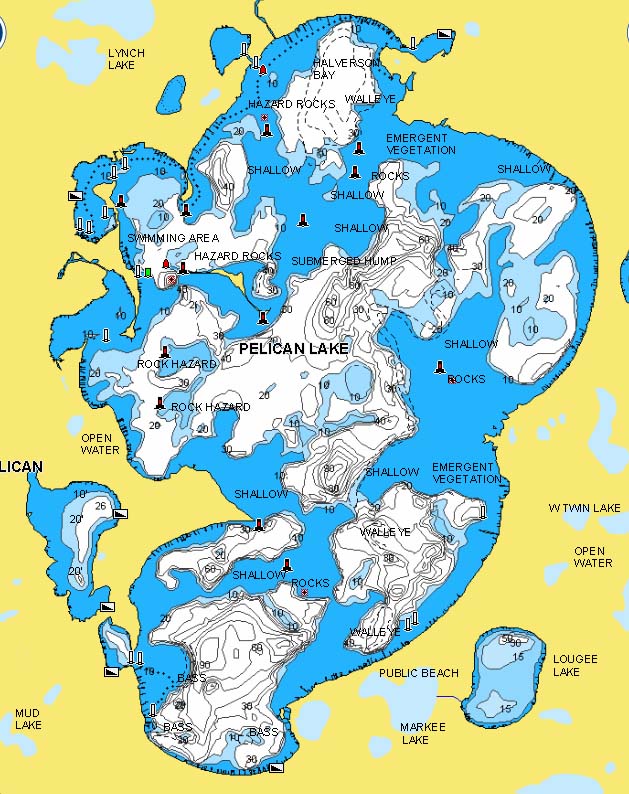
Crow Wing and its surrounding counties hold some of Minnesota’s best, and best-known, fishing lakes. Among them is Pelican Lake—an 8,000-plus-acre body of water that ranks as a premier multi-species fishing destination.
Though largemouths, pike, and crappies are on the menu, walleyes account for more angling hours than all the rest. The lake is stocked annually with substantial numbers of fry, and they, along with fish spawned naturally, keep the harvestable number of walleyes quite high.
Pelican Lake presents a couple of challenges to anglers, however. The first is that the drop-offs are generally steep. It’s not uncommon for the depth to change 15 feet in one boat length. Second, the accidental introduction of zebra mussels has resulted in extremely clear water.
Diehard angler and Team Northland member Craig Dickmeyer has fished Pelican for more than 20 years. He shares his wisdom here to help all anglers make the most of their time on the water.
1. From the general fishing opener in mid-May until about mid-June, Dickmeyer recommends walleye anglers fish a jig-and-minnow or jig-and-plastic combo. “It’s pretty much the go-to bait in the early season,” he says. “Most anglers use a short-shank jig like the Fire-Ball® or Stand-Up Fire-Ball® with a spottail shiner or big fathead, but there are other good options, too.”
Also solid choices this time of year, according to the angler, are the RZ Jig and Deep-Vee Jig, as are soft plastic baits such as the Impulse® Smelt Minnow and Paddle Minnow. Use a 1/8-ounce head down to about 12 feet and a ¼-ounce jig in deeper water, or if the wind makes it impossible to maintain bottom contact with the light jig.
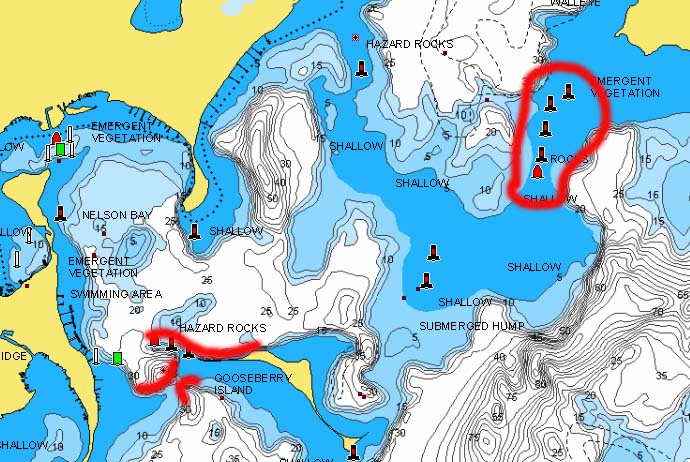
Dickmeyer recommends two spots where anglers can begin searching for early walleyes. “Try jigging the rock and rubble that extends from the west end of Gooseberry Island,” he says. “Focus on 7 to 12 feet of water and drag/hop the jig along the bottom.”
A saddle, marked by shallow-water buoys, that lays just about due south of the entrance to Halverson Bay in the lake’s northeast corner is another early-season area. “It’s a little bit of a community spot,” he says, “but it’s easy to find and produces fish fairly consistently, so don’t pass it up.
“The shiner spawn is one more thing anglers should note,” Dickmeyer adds. “It usually happens around Memorial Day weekend.” He advises anglers to look for baitfish in the shallows, especially around large dock complexes. “Where you see shiners, you’ll also find walleyes. Try trolling a size 5 shad body crankbait a long the 8- to 10-foot breaklines, especially during the low-light evening period. It’s money!”
2. By the second week of June, walleyes typically begin transitioning to their summer patterns, though things can progress faster or slower depending on weather conditions. “Hatchery reared walleyes relate strongly to weeds,” he explains, “so this is when anglers should start looking for established weedlines in deeper water. Don’t just fish any weed edge, though; use your sonar to locate fish before you drop a bait; you’ll be able to see them.”
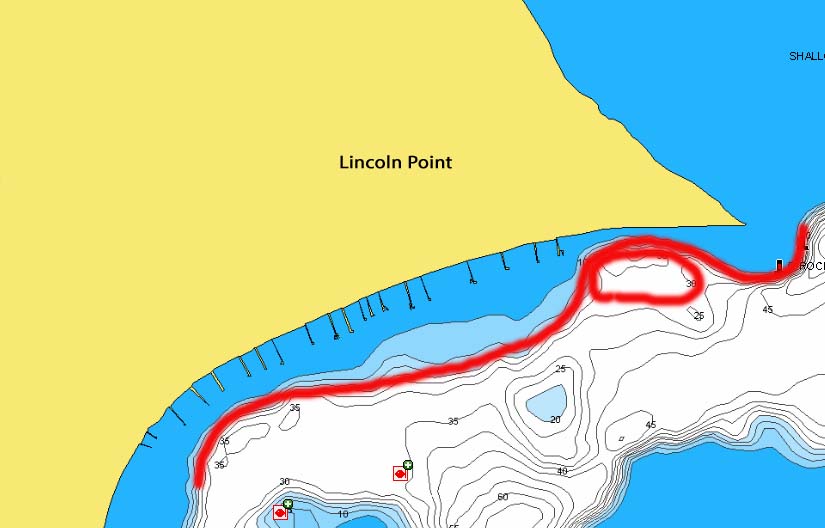
Because Pelican Lake is extremely clear, the outside edges of vegetation may be anywhere from 20 to 30 feet deep. “That’s where those fish are, and it’s pretty much where they’ll stay up until turnover,” he says. “You can catch them using a variety of methods, An Impulse® Jig Crawler or Jig’n Leech on a lead head would certainly work, but also try dragging an Impulse® Nightcrawler or live ’crawler on Crawler Hauler behind a bottom bouncer or Slick-Stick®. Or, even a Gum-Drop Floater-and-leech or a floating minnow-body stickbait behind a bottom bouncer.”
Walleyes along the weedline will come out to take these presentations, he explains, but there will be times when it pays to troll deeper water (30-plus feet deep) away from the edge, looking for fish that have moved farther out for whatever reason and often lie belly-to-bottom.
“Every one of these presentations will work, and on some days one will produce better than all the others combined. Anglers have to be adaptable, and be willing to try different techniques until they determine the hot ticket for the day.”
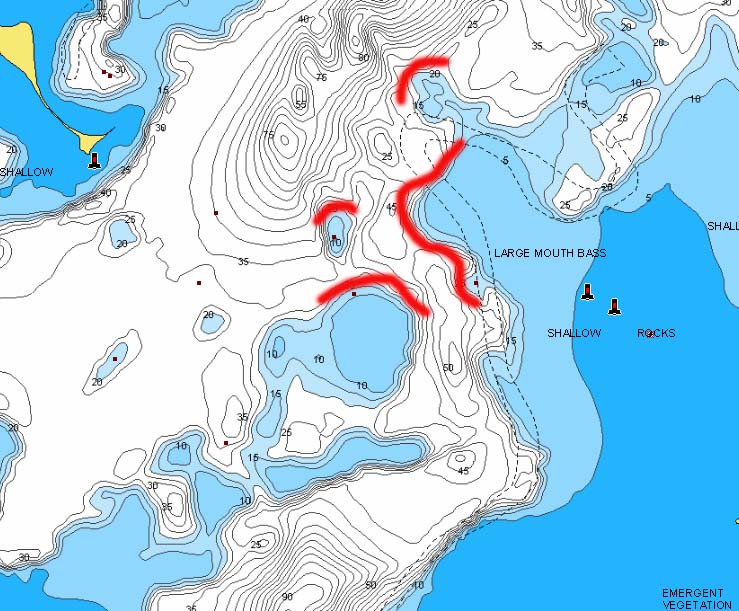
Dickmeyer recommends looking for summer walleyes on the north end along the mid-lake breaklines to the east of the main basin. Anglers should focus on the 24- to 30-foot zone with the techniques mentioned earlier.
“Again, watch your sonar for signs of life, weeds, and transitions zones where the bottom changes from silt to a harder substrate,” he explains. “This is also a good multi-species spot; a lot of largemouth bass are caught here by anglers throwing jig worms, soft plastic tube baits, and soft plastic crawdads around that 28-foot mark.”
3. Turnover on Pelican typically occurs sometime between the third week in September and the first week of October. “And that’s the time to hunt for big fish,” says Dickmeyer. “They’re actively feeding—bulking up for the winter—and it’s the best opportunity to catch the best walleye of your life.“
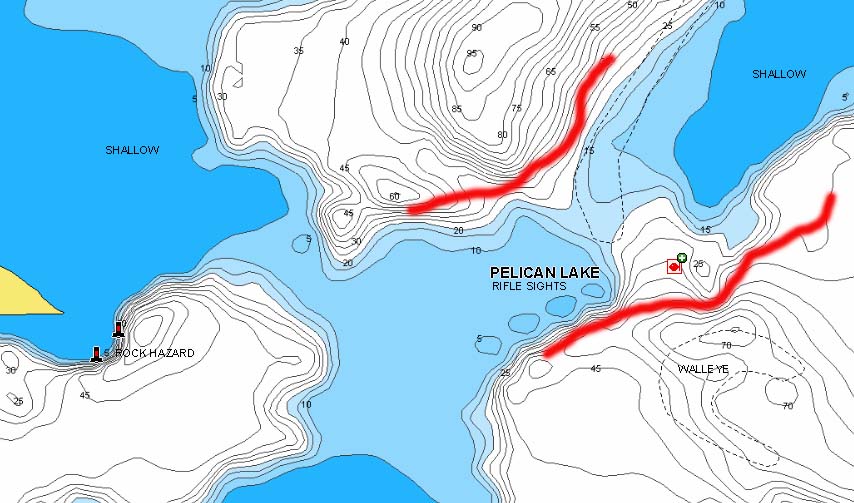
The saddle, known as “Rifle Sights” lies east of Lincoln Point and is the most notable big-fall-fish spot on Pelican Lake, according to the angler. “Start looking for walleyes in about 35 feet of water, and out to 45 or 50,” he says. “You’ll see them on the sonar screen; they’ll stand out like they’re in the middle of a deserted Times Square.”
Big live bait is the program for these fish. Dickmeyer recommends a Roach Rig with a ½-ounce Walker Sinker trailing a size 4 or 2 hook 3 or 4 feet behind. “And go big with the bait; don’t be afraid to pin a 6- or 7-inch redtail chub on the hook, because these fish will have no trouble eating it.”
The steep break off the end of Lincoln Point is another area for late-season trophies, he adds. “Especially when the wind is from the southwest,” he says. “When the wind blows in there, it’s golden. Just stay in deep water and look for them on sonar.”
4. During the winter season, anglers typically target breaklines from about 14 to 20 feet—especially during the hour around sundown. Though many fishermen stick with the basics—a live fathead or redtail on a plain hook—a Buck-Shot® Rattle Spoon-and-minnow head, or a Puppet® Minnow, work well, if not better, sometimes.
Don’t overlook the shallows, either, according to the angler. “Inside weedlines and the adjacent sand grass can be dynamite during those golden hours in the evenings.”
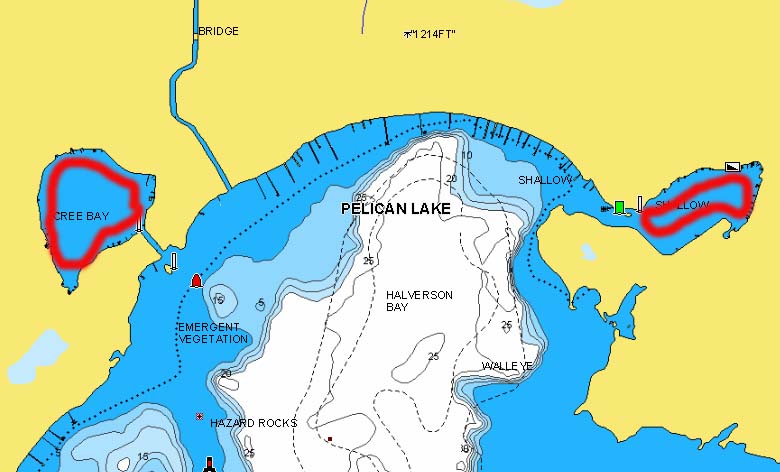
Dickmeyer spends limited time on the ice, however, preferring to bide his time until the spring break-up allows him to chase Pelican’s black crappies. “Cree and Halverson bays on the north end and Jones Bay south of Lincoln point all attract early-season crappies,” he explains, “but to my mind, Cree and Halverson are the better of the three. They warm up faster and are full of lily pads and lily pad roots.”
Being shallow and of uniform depth, there’s nothing to hold the fish in a particular spot. “You just have to go in there and fan cast until you contact them,” he says.
Try suspending a Thumper Crappie King under a Lite-Bite Slip Bobber and reel it slowly back to the boat. Or, tie on something like a Bro Bling Jig tipped with a live minnow or an Impulse® Skeleton Minnow or Mayfly.
“Go big sometimes, too,” says Dickmeyer. “I’ll often use a fathead instead of a crappie minnow; a 10-inch crappie won’t hesitate to eat it.
“Anglers can enjoy some of the best crappie fishing of their lives during the early season, but once the spawn is over the fish migrate back to the main lake and get pretty tough to find,” says Dickmeyer. “Then, most fishermen, myself included, turn our focus to walleyes.”
Vital Stats
Pelican Lake, Crow Wing Co., MN
Surface Area: 8,367
Maximum Depth: 104 feet
Water Clarity: 19 feet
Species Present: Walleyes, Largemouth Bass, Northern Pike, Yellow Perch, Black Crappies, Pumpkinseeds, Rock Bass, Yellow Bullheads, Bowfin, Tulibees, White Suckers, Spottail Shiners, Blacknose Shiners, Common Shiners, Johnny Darters, Bluntnose Minnows, and various other shiners, minnows and darters.

